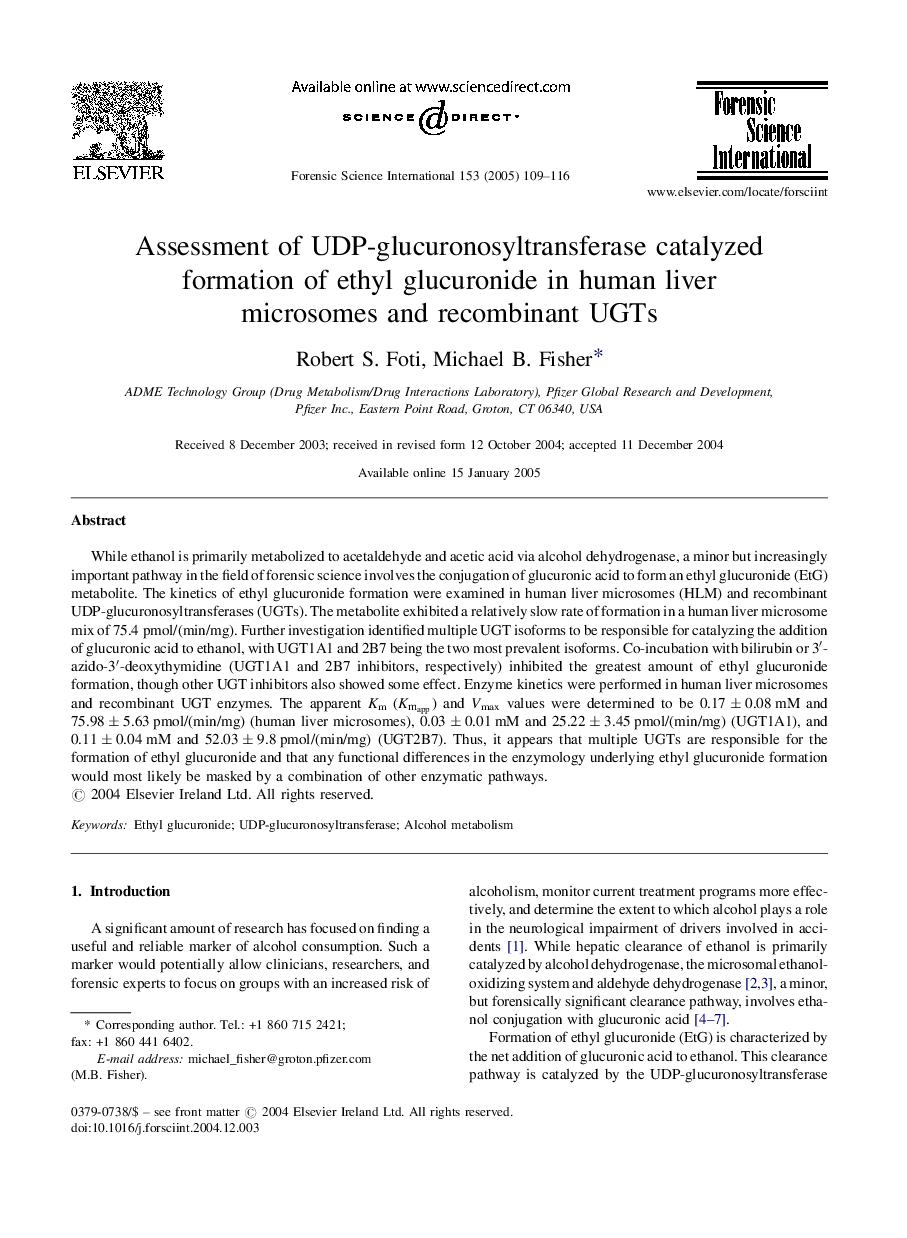| Article ID | Journal | Published Year | Pages | File Type |
|---|---|---|---|---|
| 9622446 | Forensic Science International | 2005 | 8 Pages |
Abstract
While ethanol is primarily metabolized to acetaldehyde and acetic acid via alcohol dehydrogenase, a minor but increasingly important pathway in the field of forensic science involves the conjugation of glucuronic acid to form an ethyl glucuronide (EtG) metabolite. The kinetics of ethyl glucuronide formation were examined in human liver microsomes (HLM) and recombinant UDP-glucuronosyltransferases (UGTs). The metabolite exhibited a relatively slow rate of formation in a human liver microsome mix of 75.4 pmol/(min/mg). Further investigation identified multiple UGT isoforms to be responsible for catalyzing the addition of glucuronic acid to ethanol, with UGT1A1 and 2B7 being the two most prevalent isoforms. Co-incubation with bilirubin or 3â²-azido-3â²-deoxythymidine (UGT1A1 and 2B7 inhibitors, respectively) inhibited the greatest amount of ethyl glucuronide formation, though other UGT inhibitors also showed some effect. Enzyme kinetics were performed in human liver microsomes and recombinant UGT enzymes. The apparent Km (Kmapp) and Vmax values were determined to be 0.17 ± 0.08 mM and 75.98 ± 5.63 pmol/(min/mg) (human liver microsomes), 0.03 ± 0.01 mM and 25.22 ± 3.45 pmol/(min/mg) (UGT1A1), and 0.11 ± 0.04 mM and 52.03 ± 9.8 pmol/(min/mg) (UGT2B7). Thus, it appears that multiple UGTs are responsible for the formation of ethyl glucuronide and that any functional differences in the enzymology underlying ethyl glucuronide formation would most likely be masked by a combination of other enzymatic pathways.
Related Topics
Physical Sciences and Engineering
Chemistry
Analytical Chemistry
Authors
Robert S. Foti, Michael B. Fisher,
